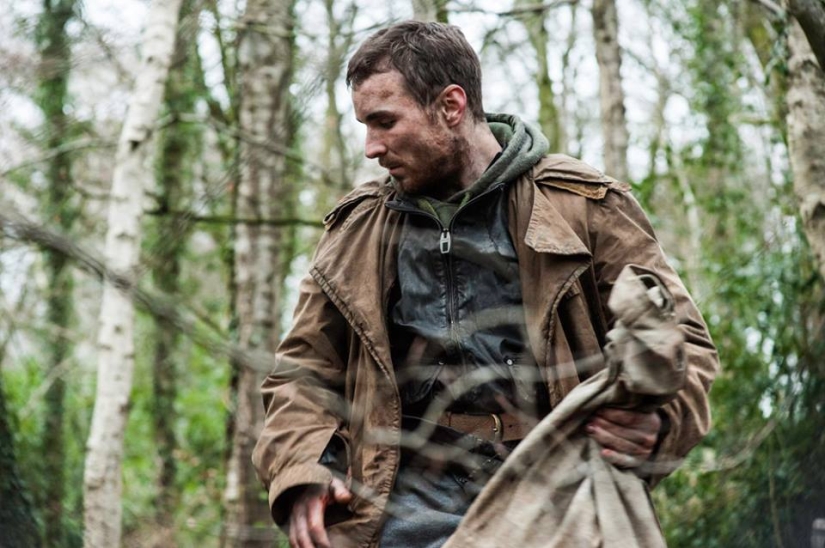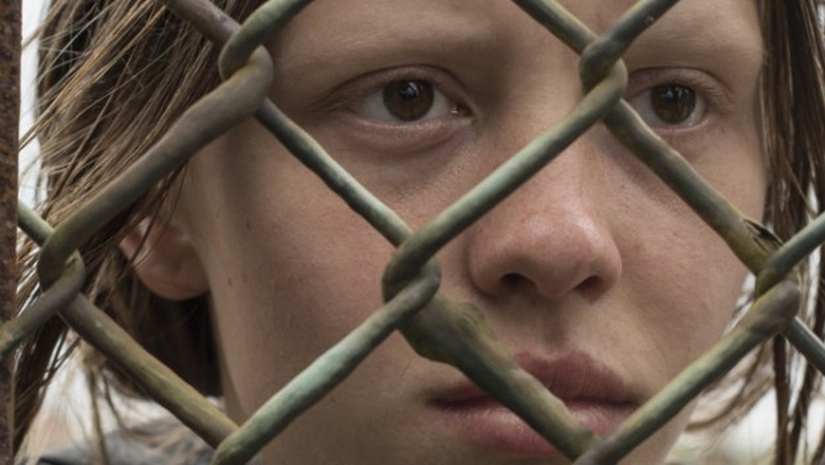In most post-apocalyptic movies, the predominant colors are brown and gray, as if the only things that can exist in this fallen world are dirt, soot, and some muddy combination of the two. In Stephen Fingleton’s assured feature film debut, The Survivalist, the post-apocalytic world is green instead, lush and overgrown now that the human population is too low to mess it up. Yet like Werner Herzog said about the anarchy of the jungle, this kind of wildness is cruel, and everywhere it’s full of murder and death.
The world of The Survivalist isn’t just overgrown, though. It’s quiet out there, and in that sinister, a-little-too-quiet way. Our title character (Martin McCann) lives on his own in the wilderness in a sustainable cabin for one. Think Henry David Thoreau’s Walden, but with the occasional raiding band of cannibal scavengers.
The Survivalist
Director: Stephen Fingleton
Rating: N/A
Release Date: April 16, 2015 (Tribeca)
The survivalist doesn’t say a word as he goes about a series of routines: he buries a body, he chops firewood, he plants vegetables, he makes lantern oil, he jerks off. When a mother and daughter (Olwen Fouere and Mia Goth) arrive asking for food, there’s finally some dialogue. They look like a pair of backpackers, but their mere presence is menacing. What the two women are asking for may not match their motives, and the survivalist’s intentions may not be so pure either. The way they negotiate suggests that this is how the world works now: all interpersonal interactions are types of transactions (even sex) carried out with quiet suspicion.
The lack of dialogue in The Survivalist is so full of potential meaning and scheming thanks to the grim look of the cast, and Fingleton finds surprising power in his expert control of images and silences. The control is apparent with his clever presentation of a graph that opens the film. A red line courses along a black screen representing the increase of human population since the middle ages. A blue line appears representing oil production, and the two lines rise together, abandoning specific decades and centuries. Eventually the blue line dips from view, and we follow the red line as it changes its orientation on the screen into decline.
That’s the history of a post-apocalyptic world told in two phrases, a handful of numbers, two lines, and the illusion of motion.
When one of the characters is in danger, a crane shot moves over a field of tall grass with controlled purpose—like the rise and fall of the infographic line, like the dread of a drawn-out note on violins. The audience sees the danger in the field that our hero can’t see, and the audience also knows something about the situation that our hero doesn’t realize.
The Survivalist takes advantage of the limitations in a character’s knowledge. It enhances a number of tense moments throughout the film, where a brief beam of light in the dark is a herald of doom, or even the way a character selects and holds a garden tool seems like a prelude to murder. Everything and everyone is so on edge because the world is out to get them. The Survivalist is all about the pervasive suspense of the quiet and unseen world, and also the unknown and unspoken aims of other people.
Fingleton’s visual panache drives most of the film’s mood, though the grounded performances lend subdued desperation to the proceedings. McCann has a feral kill-or-be-killed edge, and Fouere has a fox-like mien that suggest she’s always calculating her next move; Goth seems so withdrawn, by contrast, and it’s difficult to tell what her character’s feeling or if she feels much at all anymore. That’s the reality of the world of The Survivalist, though there’s something harsher that all the characters have come to accept: even small changes in routine can mean the difference between life and death.
For more information on The Survivalist and to find out about screenings/tickets for the Tribeca Film Festival, click here.


